We’re just two months apart from when the Bali sky was made brightly colored with fireworks last year on December 31, and one month from when the island was painted red with the celebrations of Chinese New Year. But being an island with no shortage of occasions worth celebrating, Bali is currently gearing up to prepare yet another festivity: Saka New Year 1939. Locally known as Nyepi, which will fall on March 28 this year, Saka New Year is one of the most unique festivals ever observed in Bali, for the whole island will turn into a total silence for 24 straight hours.
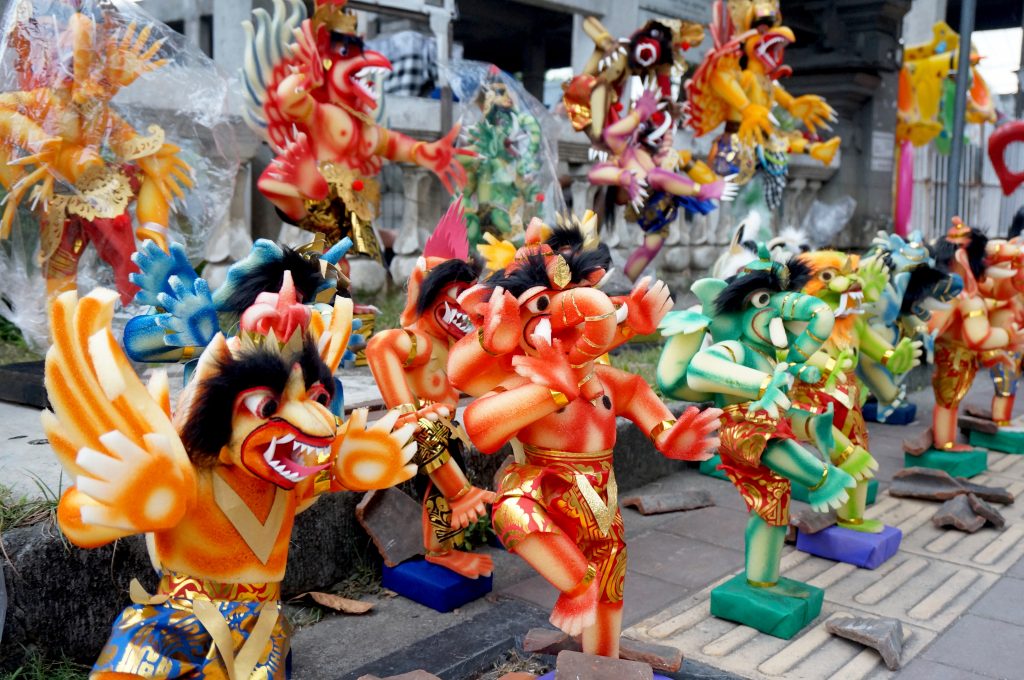
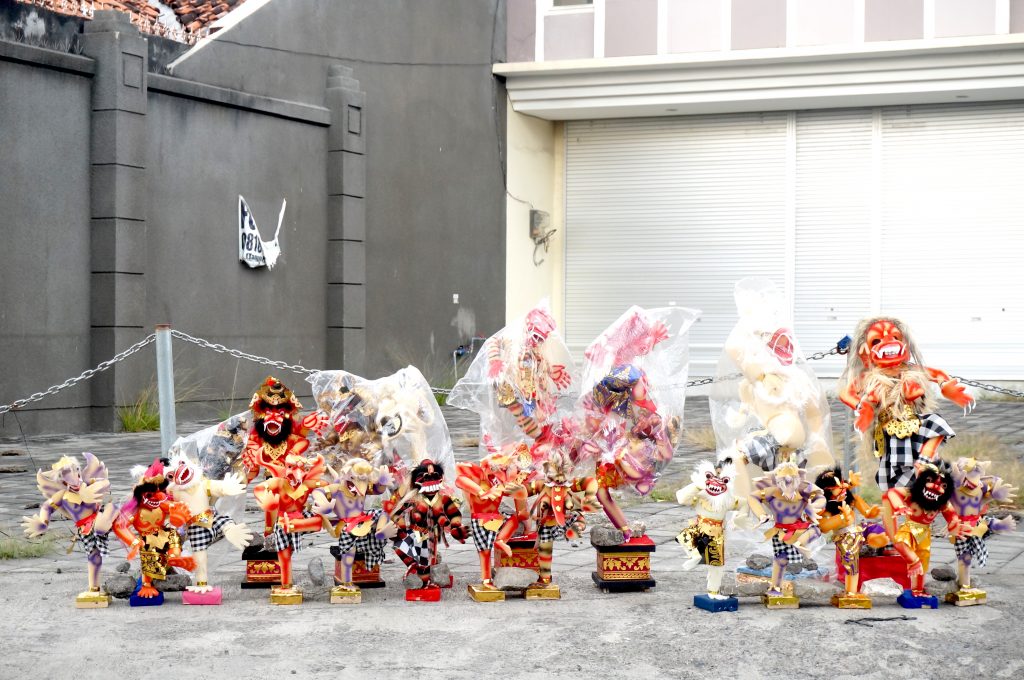
Prepping for the festival
Leading up to the Saka New Year, village meeting halls (known as Banjar) across Bali will be hard at work preparing their Ogoh Ogohs for the island-wide street parades. The Ogoh-Ogohs are papier-mâché effigies inspired by Balinese Hindu mythological demonic beings, and are intricately made from colored papers, mirrors, suede, tinsel, bamboo, and many other materials. Hand painted and meticulously designed, these sculptures are more than just parade floats. They are alive.
From designing phase to sourcing the materials, and fabricating the framework to assembling the parts, each village community will spend weeks to make their Ogoh Ogoh the prime focus at the parade. And while the village master crafters are up to their necks shaping the Ogoh Ogoh, a team of young musicians will be busy fine-tuning their traditional Gamelan orchestra notes to infuse a little bit of drama – or a lot, given the loud noise – to the Ogoh Ogoh parade, and to be the pride of their Banjar.
Outside the Banjar, one can easily tell that Nyepi is coming through the many Ogoh Ogoh miniatures sold on the street sides of Denpasar roads even one month prior to the silent day.
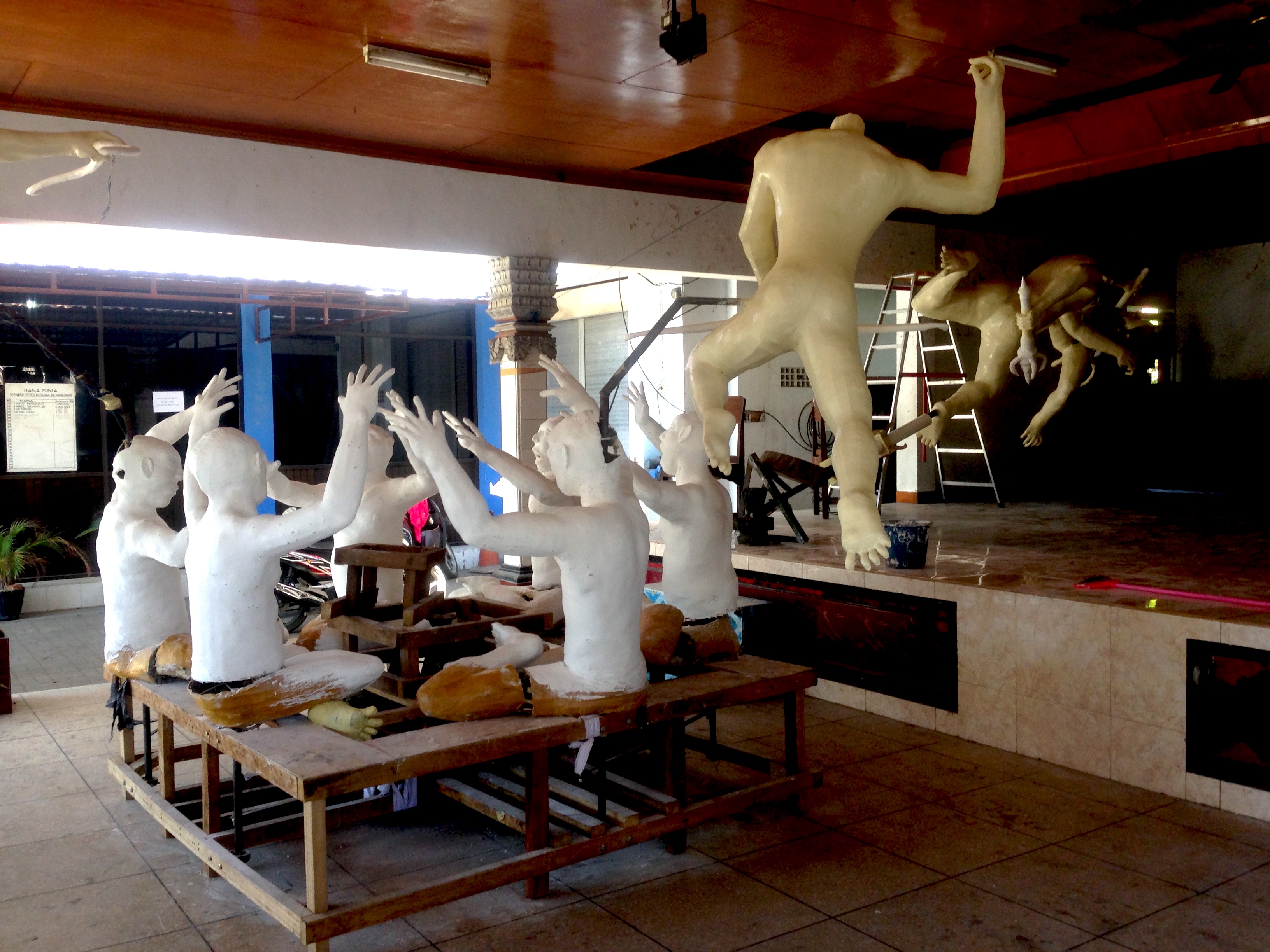
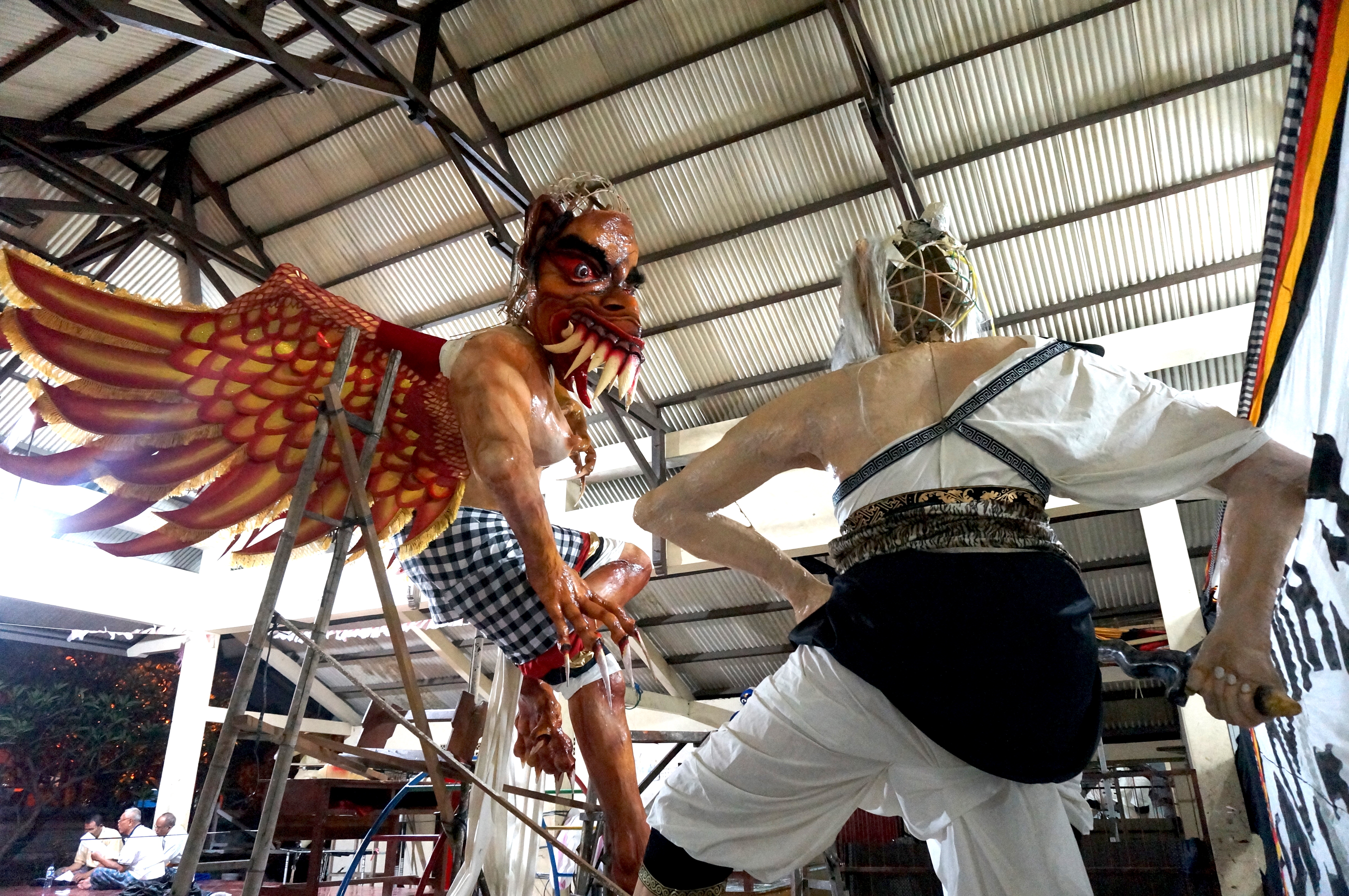
Monsters take to the streets on Nyepi Eve
The new year is celebrated with pomp almost everywhere in the world. And being home to a unique culture, Bali has its own way to ring in the new year. Leave your trumpets and fireworks at home, for the Balinese are flooding the streets of their home island with evil monsters; but if you expect to see a giant Dr. Hannibal Lecter or Freddy Krueger then you’ll be disappointed, for you’re in the wrong party.
The eve of Nyepi is when the Balinese Banjar communities show off their Ogoh Ogoh creations on the island-wide street parade, carrying it on the convoy, while shaking it to make it look like it’s moving and dancing. Of course, different Ogoh-Ogohs have different function, so when made to move they produce different actions.
At some point the parade will lead into an intersection, causing the convoy to circle around, which pushes the onlookers outwards and tighter together. Then more men appear behind the float;they are playing instruments as they run and circle their village’s demon creation. All this movement and sound symbolizes a duel between the demon and the village. But the commotion doesn’t end anytime soon, for dozens of Banjars take part in one parade. Some of the Ogoh Ogohs will then be burnt after being paraded as a symbol of purification.
The name Ogoh Ogoh is derived from the Balinese “ogah-ogah”, meaning “to shake”, and it represents the Bhuta-Kala or evil spirits, vices that need to be kept away from humans. There’s no clear evidence, but many argue that Ogoh Ogohs have been used since the age of the ancient Balinese kingdom Dalem Bangkiangas an integral part in a cremation ceremony. Others believe that Ogoh Ogohs were first inspired by a ritual from the village of Selat in the Karangasem regency, where it was used as a medium to repel the evil spirits.
The most impressive Ogoh-Ogohs are paraded at the Puputan Square in Denpasar. Here, the Ogoh-Ogohs are not only great in artistic shapes and sizes, but are also completed with colorful lightings and some are even motorized to create even more dramatic effects. A troop of Balinese dancers accompanied by live traditional music usually trails behind the float as a story teller narrates the tales of the demon on a microphone.
With the island hosting its annual Ogoh Ogoh parade, many roads especially on the island’s south will be closed to facilitate the event.
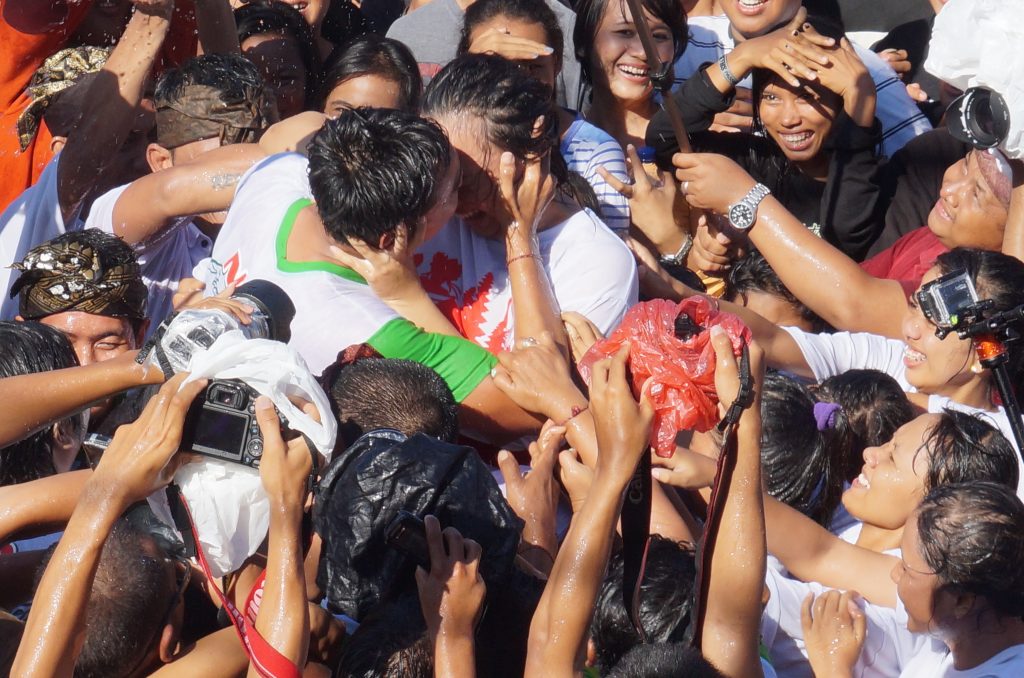
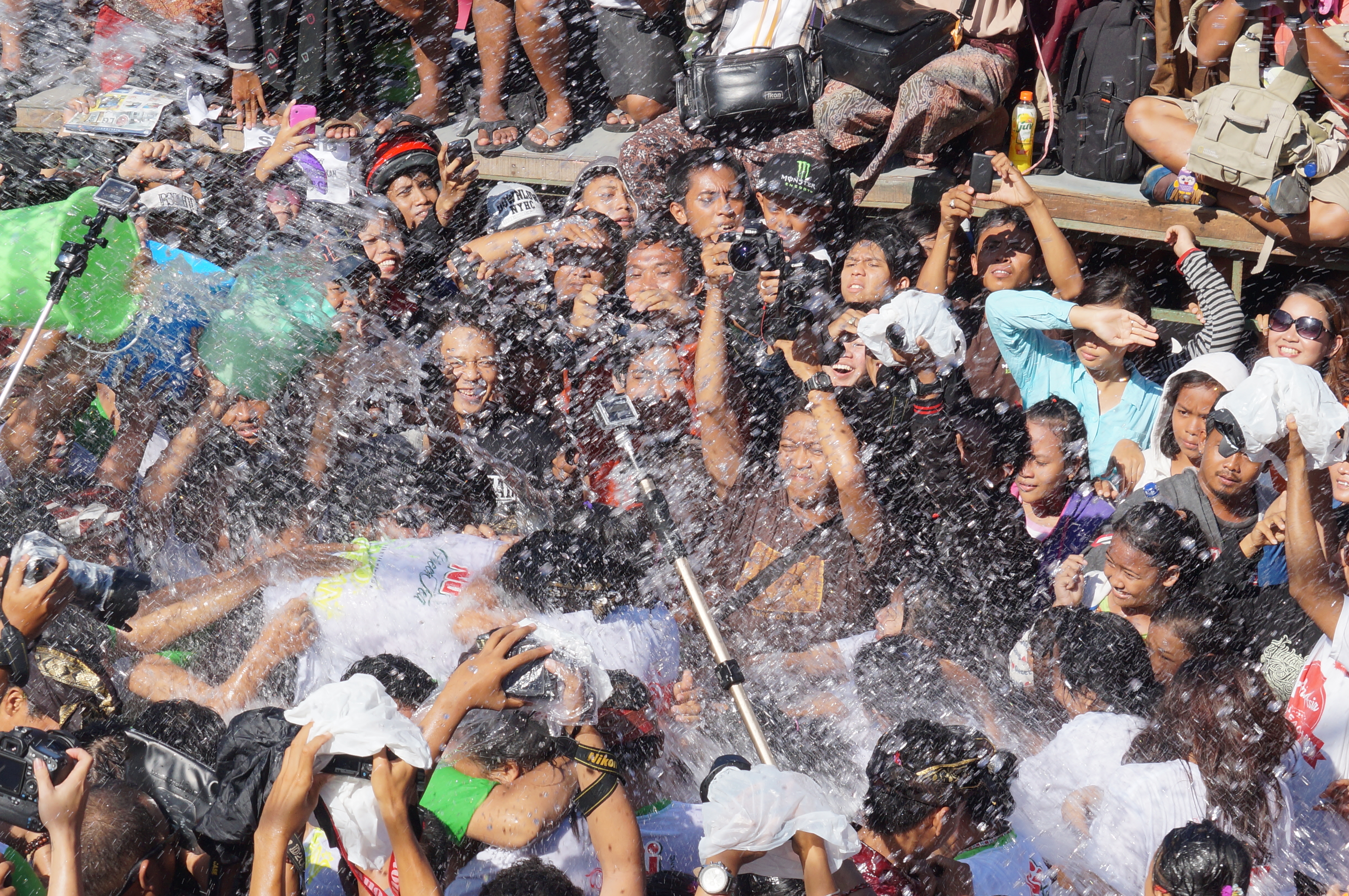
Out of the silence, and into public display of affection
The day after Nyepi, the residents of Sesetan will flood the main road of their area in Denpasar to celebrate the Saka new year. Here they’ll put on a show that will make the audience wet. Literally!
The single Sesetan boys are probably the happiest on this day, for they get to kiss the single girls of their village without anyone pressing charges. Known as the kissing ritual, Omed Omedan is when the bachelors and bachelorettes aged 17-30 of Sesetan gather on the area’s main street. Divided into two groups (men and women), they will take position and face each other; at a given signal, both sides will approach to the centre of the street, and male participants will pull and kiss (sometimes forcefully) the female participants while the rest of the villagers in the audience pour buckets of water over them.
Meaning “to pull” in Balinese, Omed Omedan has been passed down from generation to generation in the hamlet as an activity intended to strengthen the social cohesion among the young generation of Sesetan. The ritual was once dismissed in the 80s, and what happened after didn’t please the villagers; some kind of plague struck the area, causing pigs to fight each other with the Sesetan residents struggling to separate them. Due to this strange occurrence, the festival was resumed, for it is believed that this annual ritual prevents disaster from descending upon the village.
The ritual will begin with everyone involved praying in the village’s Banjar temple. Once the praying is done, there will be a brief Barong performance that takes place on the road. By this time, hundreds of people from the neighboring areas and visitors in the know will have already flocked to the road.
The Omed Omedan normally takes place at around 2pm, and visitors wishing to observe the festivity are advised to arrive early to secure good positions to snap photos. You might want to protect your camera with a waterproof housing as there will be water sprays everywhere right in the centre of the crowd. There will also be a street bazaar with vendors selling traditional food, clothes, and more. Live music and comedy shows delivered in Balinese and/or Bahasa Indonesia will be performed on a stage before the ritual begins.
ABOUT THE WRITER
 Namhar Hernanto
Namhar Hernanto
Namhar really savors the unique culture and festivals of the Island of the Gods.
A Jakartan living in Bali, he always makes time to travel to the island’s deepest corners, hoping to run into the colorful Balinese Hindu ceremonies. He now leads the editorial team at NOW! Bali Magazine.

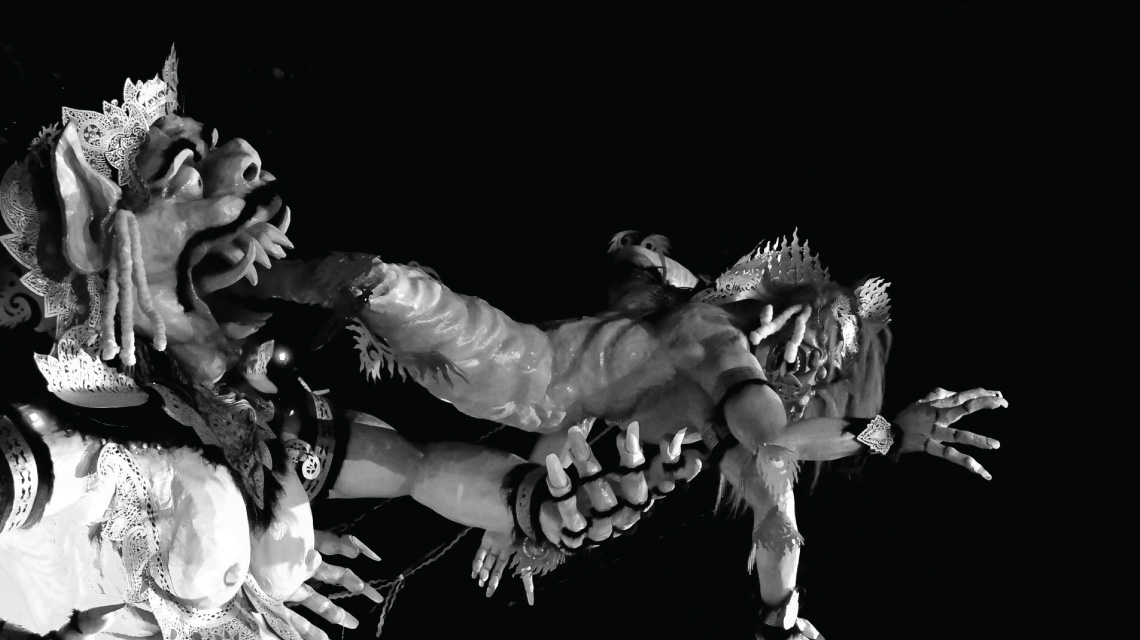
No comments